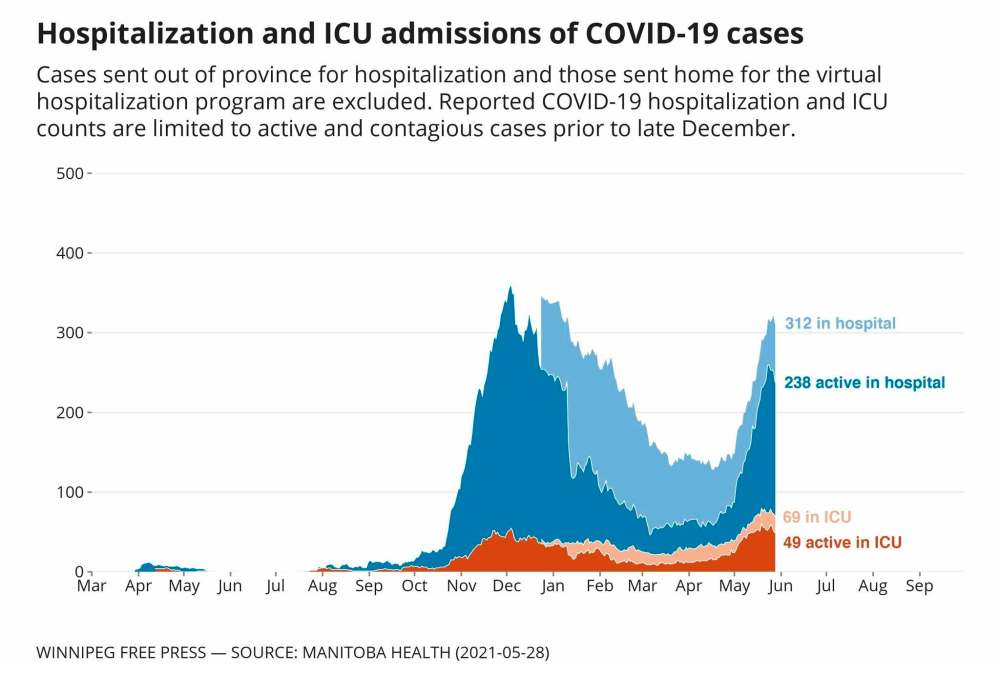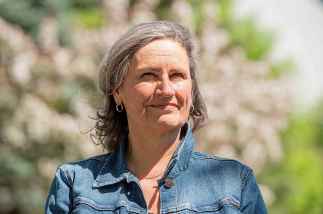Novel coronavirus wave uncovers class divide
Read this article for free:
or
Already have an account? Log in here »
To continue reading, please subscribe:
Monthly Digital Subscription
$0 for the first 4 weeks*
- Enjoy unlimited reading on winnipegfreepress.com
- Read the E-Edition, our digital replica newspaper
- Access News Break, our award-winning app
- Play interactive puzzles
*No charge for 4 weeks then price increases to the regular rate of $19.00 plus GST every four weeks. Offer available to new and qualified returning subscribers only. Cancel any time.
Monthly Digital Subscription
$4.75/week*
- Enjoy unlimited reading on winnipegfreepress.com
- Read the E-Edition, our digital replica newspaper
- Access News Break, our award-winning app
- Play interactive puzzles
*Billed as $19 plus GST every four weeks. Cancel any time.
To continue reading, please subscribe:
Add Free Press access to your Brandon Sun subscription for only an additional
$1 for the first 4 weeks*
*Your next subscription payment will increase by $1.00 and you will be charged $16.99 plus GST for four weeks. After four weeks, your payment will increase to $23.99 plus GST every four weeks.
Read unlimited articles for free today:
or
Already have an account? Log in here »
Hey there, time traveller!
This article was published 28/05/2021 (1655 days ago), so information in it may no longer be current.
As more lower-income Manitobans land in hospital with COVID-19, a class divide is becoming clear.
During Manitoba’s third wave, the novel coronavirus is disproportionately hitting people who can’t work from home, many of whom are not white.
New race-based data was released this week, showing Manitobans who identify as South and Southeast Asian, African and Filipino are suffering the worst COVID-19 infection rates. Local doctors are noticing many of the sickest patients who need to be admitted to hospital are marginalized in some way, either because of race or socioeconomic status.
His work in a COVID ward at St. Boniface Hospital has shown Dr. Anthony Battad a common theme: many of the third-wave patients he sees are young workers who are Black, Indigenous, or people of colour.
Like him, many are Filipino.

“A lot of them take their best guesses as to where they got it from, and we hear a lot of, ‘Well, I must have gotten it from work or public transportation,'” the internal medicine specialist said.
Manitoba doesn’t yet have good data on workplace transmission of COVID-19, but public health officials have said they’re working on analyzing and releasing reliable figures.
About 10 per cent of cases spread at work, chief provincial public health officer Dr. Brent Roussin said Thursday.
Under updated orders that take effect Saturday morning, if at least two employees working at the same location contract COVID-19, employers must notify public health. Employees must work from home “unless the specific nature of an employee’s duties requires them” to show up in person.
Asked how the rule will be enforced, deputy chief provincial public health officer Dr. Jazz Atwal said: “We are trusting employers… Most employers are good people, and I think everyone’s going to do the right thing to make sure that they follow that order.”
Atwal didn’t directly answer when asked during Friday’s news conference if public health officials can recommend Manitoba implement paid sick leave for all employees. Earlier this month, the province announced it would legislate three paid hours, so Manitobans could leave work to get vaccinated.
Battad said he believes extended paid sick leave is necessary, based on the number of patients he sees who are under pressure to continue working in front-line jobs, some so they can send money to family in the Philippines or other countries.
Even when race isn’t a factor, paycheques still are, he said.
Battad said he recently cared for a hospitalized COVID-19 patient in their early 20s, whose employer kept calling to find out when they’d be back at work. The patient believed they had tested positive after a workplace exposure.
“I think the biggest challenge, to be perfectly honest, is money. If you don’t have paid sick leave, even temporary paid sick leave while we deal with this public health emergency, people are going to continue to go to work because that’s their reality.”
Dr. Anand Kumar, an attending ICU physician in Winnipeg, said he’s seen a similar trend in intensive care, and it’s a stark difference from pre-pandemic times.
“I haven’t seen formal numbers on it, but it’s pretty obvious on the ground. Most of those that are coming in these days are what you’d consider essential workers, and Indigenous people. People that are working in grocery stores and other really essential services,” Kumar said. “People that have to work with their hands.”
Last week, provincial officials said 70 per cent of Manitoba’s COVID-19 hospital patients were unvaccinated, and some had not been tested for the virus prior to showing up at hospital.
Battad has been doing outreach in the Filipino community to encourage vaccine uptake and explain public health orders.
He said the idea the majority of hospital patients are choosing not to get vaccinated or large proportions are refusing to get tested is a “gross oversimplification” that doesn’t get to the root of why certain groups are being more severely impacted.
A lot of times, they don’t feel like the public health orders are relevant because they don’t have the luxury of staying home, he said.
“We come from humble beginnings, and I know what it’s like to not have a choice but to go to work. I know what it’s like to perhaps not be listened to,” Battad said, adding the pandemic has exposed systemic inequalities that need to be addressed when it’s over.
“It’s idealistic, but you know, with this tremendous loss and tremendous tragedy, there’s also a tremendous opportunity to be better once we’re out of this.”
katie.may@freepress.mb.ca
Twitter: @thatkatiemay

Katie May is a general-assignment reporter for the Free Press.
Our newsroom depends on a growing audience of readers to power our journalism. If you are not a paid reader, please consider becoming a subscriber.
Our newsroom depends on its audience of readers to power our journalism. Thank you for your support.

.png?w=1000)








